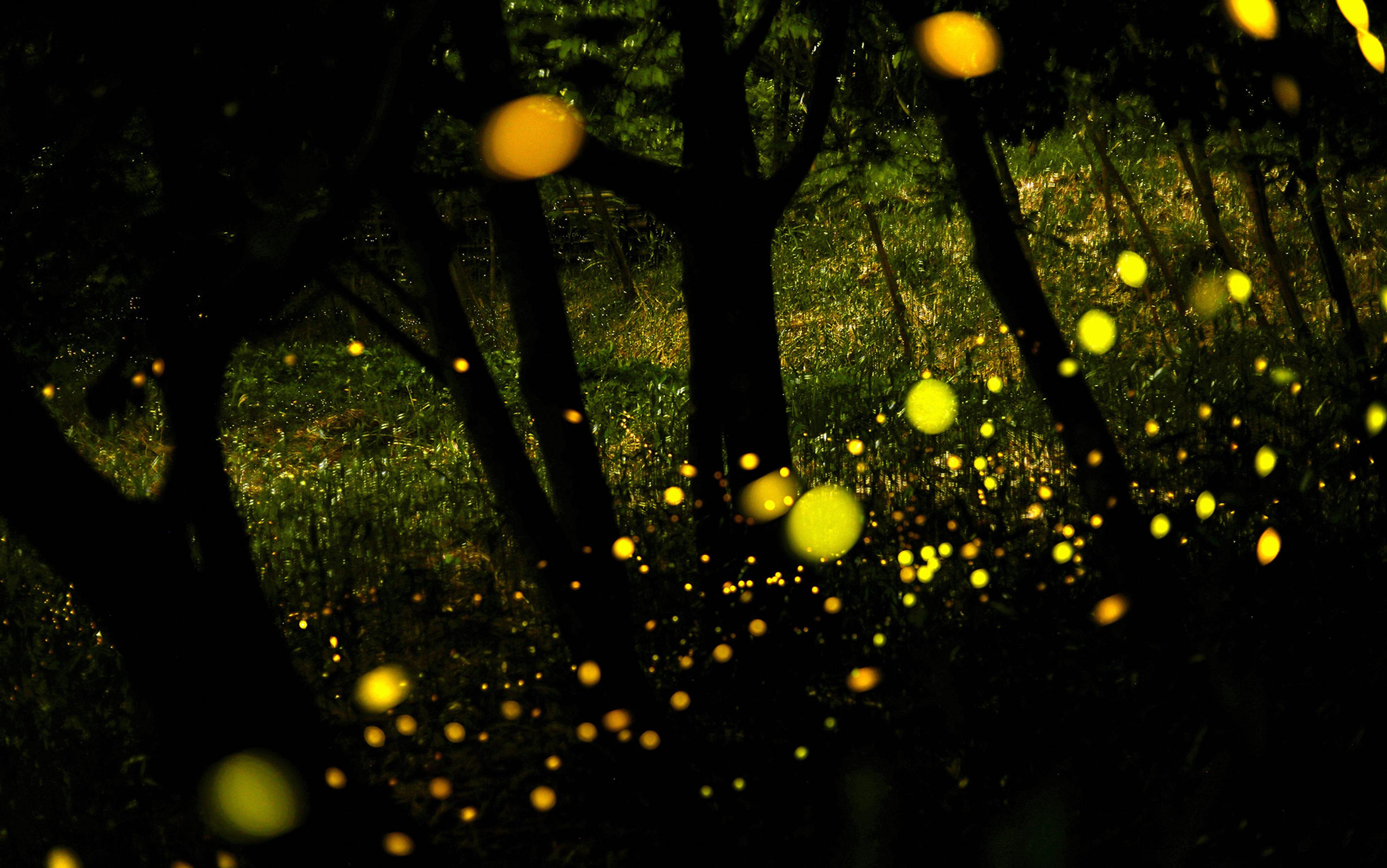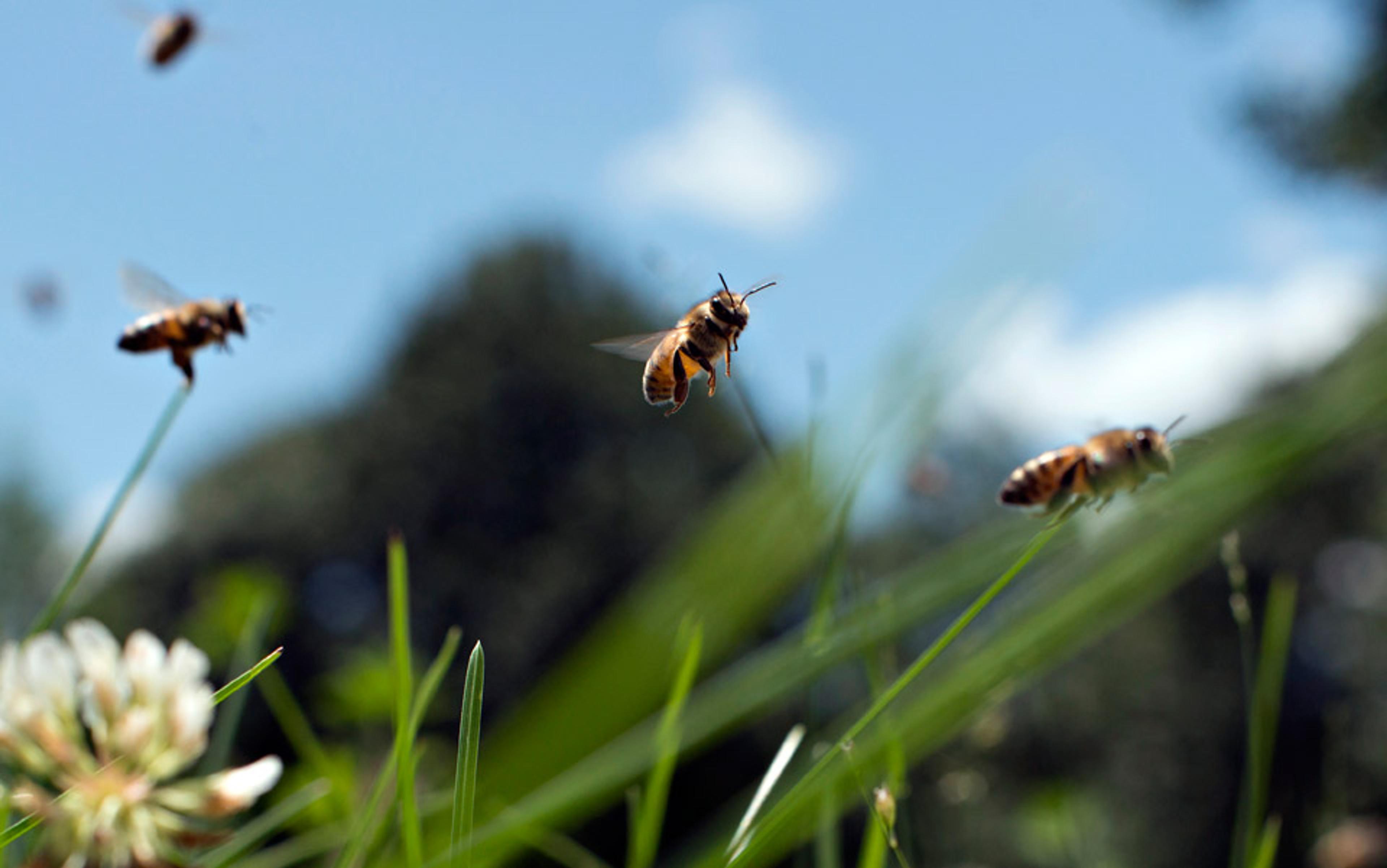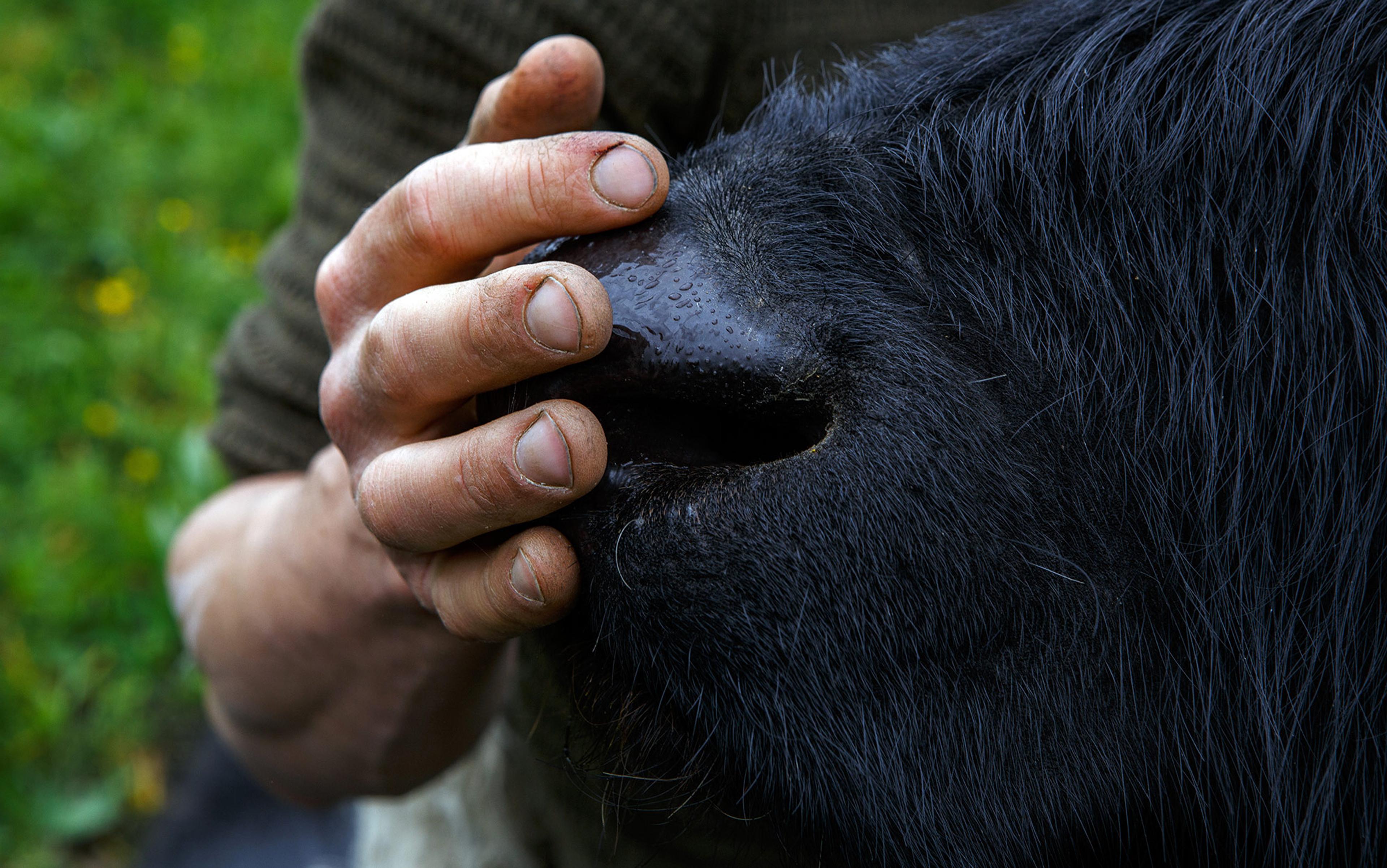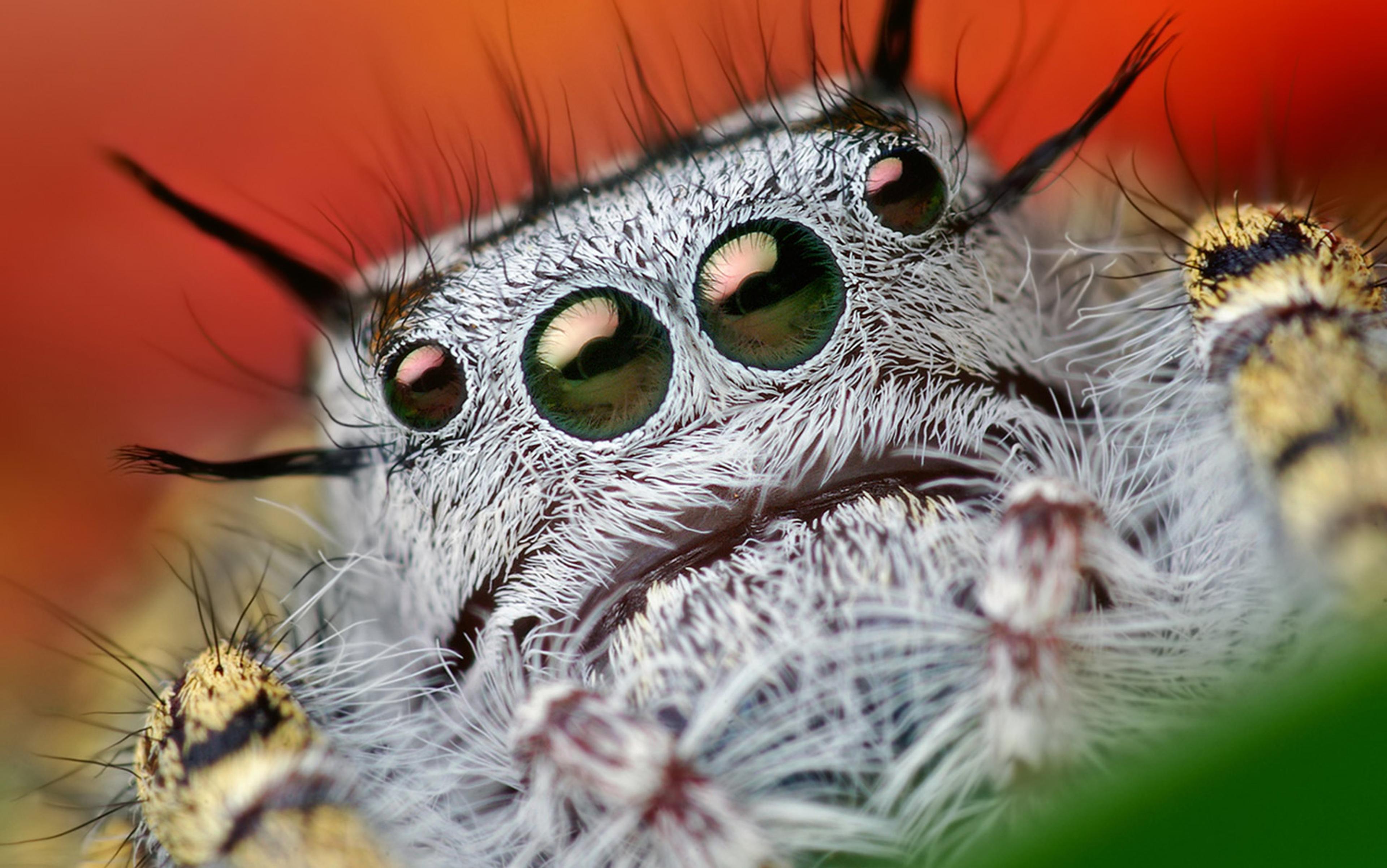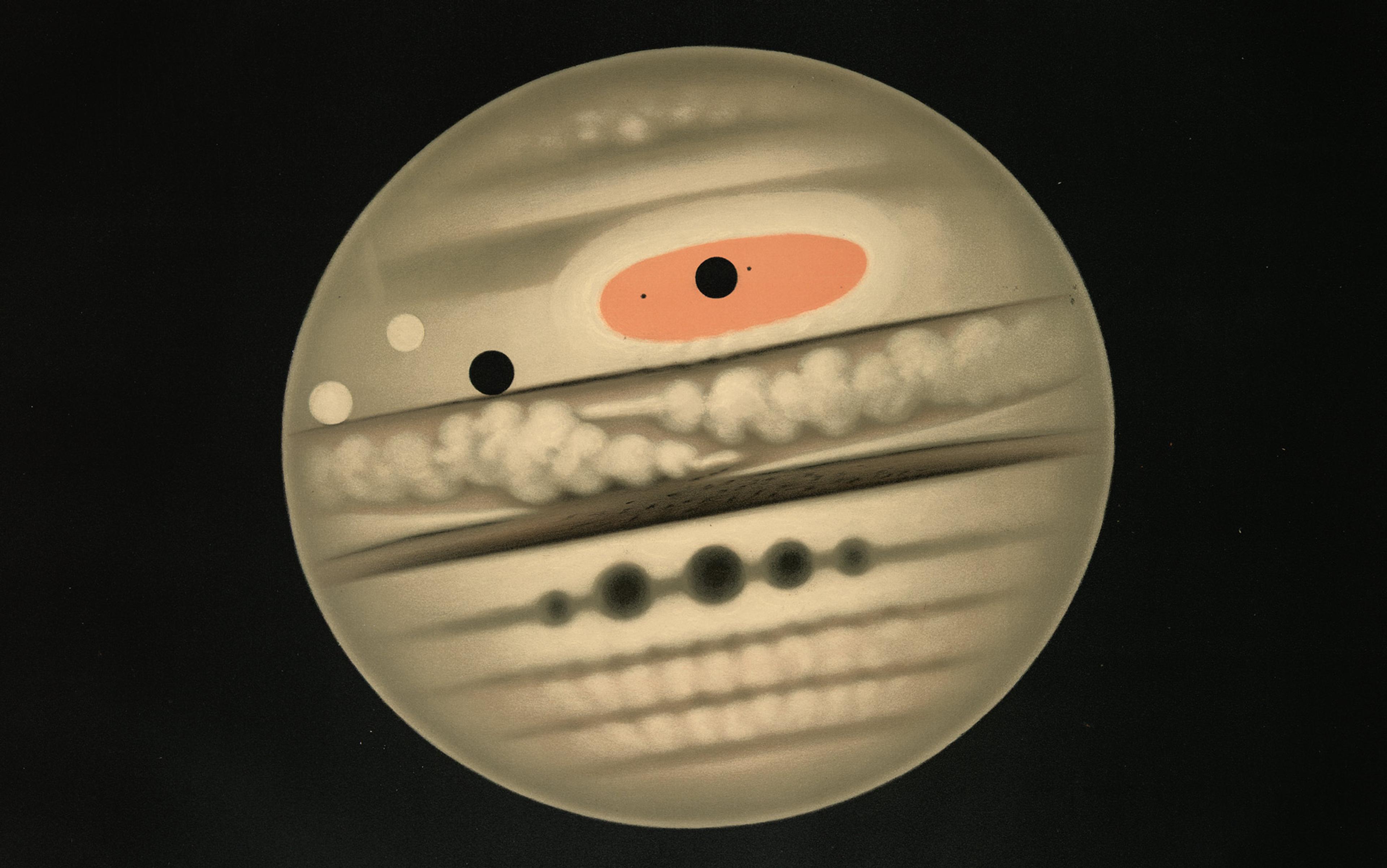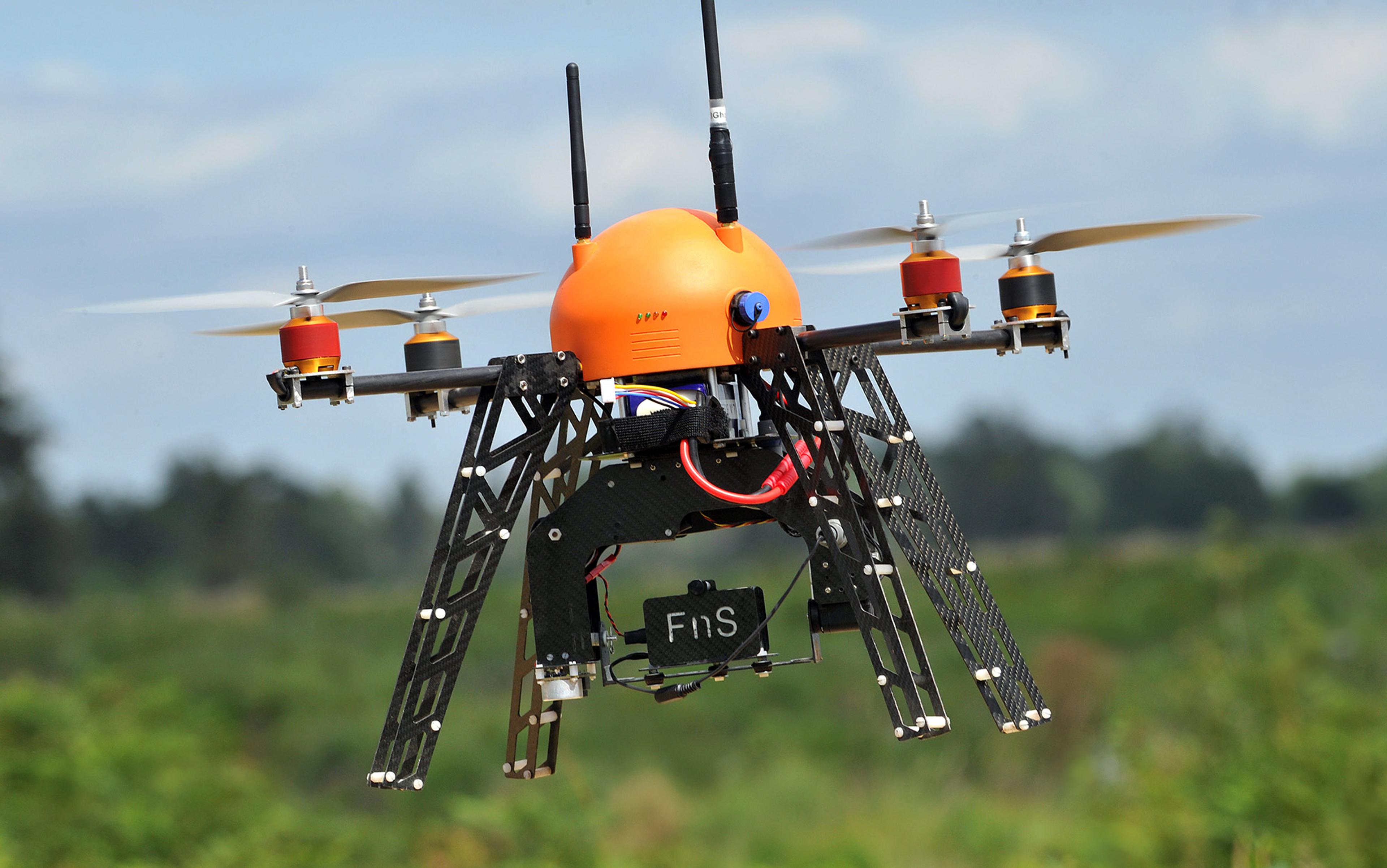In the still of the Tennessee night, my colleagues and I are watching thousands of dim little orbs of light, moving peacefully in the forest around us. We try to guess where the next flash will appear, but the movements seem erratic, even ephemeral.
This summer, as we set up our cameras and tents, I feel a crippling sense of dread. I had brought us all up here to the Great Smoky Mountains National Park, an unlikely group of computer scientists and physicists from my lab, in order to chase fireflies. My colleagues, mentees and I study firefly communication in hopes of unravelling the mystery of how and why they blink in unison with one another. This rare phenomenon is one of the most tantalising mysteries in complex systems science. If we could capture firefly synchronisation in an algorithm, it might help crack any number of riddles in cellular biology, animal communication and even swarm robotics. But there was no guarantee, and I worried about whether the experiment was going to work. It was a constant race against time, as these light shows last for only about 10 days per swarm. Though we’re lightyears away from the nearest star, I found myself glancing up at the distant constellations, which seemed predictable by contrast to the swarming sea of bioluminescence.
As it happens, I found my path to fireflies via the stars. In my late teens, I was obsessed with astronomy. I marvelled at the fact that I was such a tiny creature, surrounded by a vast Universe in which there was so much to explore. This discrepancy, between the scale of individual components and the entire global system, is prevalent in many of the things that physicists observe: from atoms crystallising into lattices, to soap-bubbles coalescing, to concrete bridges vibrating in resonance. What’s common to all these examples is the underlying physics of complex systems, where the microscopic interaction between individual building blocks determines the behaviour of the macroscopic whole.
I am forever in debt to the popular science books, movies and documentary TV shows that exposed me to such captivating natural phenomena, and gave me a healthy appetite for more formal education. As an undergraduate physics major, I went on to take a class on dynamical systems. We learned how electrons in superconductors synchronise their vibrations to allow for superconductivity, allowing electrical current to pass through it with minimal resistance. The concepts were heavy in mathematics and challenging to grasp. The major book that formed the spine of the course was called Nonlinear Dynamics and Chaos (1994), by Steven Strogatz – an applied mathematician who is not only renowned for his significant contributions to mathematical models of synchronisation, but also for being a superb science communicator.
To make the material more approachable, Strogatz discussed other relatable examples of synchronisation in nature, leaping back and forth from inanimate to animate systems. One of these examples was the flashing of fireflies: ‘In some parts of southeast Asia, thousands of male fireflies gather in trees at night and flash on and off in unison.’ To this day, I still remember discussing firefly synchronisation in that class, imagining them producing a light show influenced by the same physical laws that control electrons in a superconductor. And that was it: the problem of how and why was planted in my brain.
I have since become an interdisciplinary scientist, exploring natural history from the perspective of physics, and developing testable theories to bring a deeper understanding of the physics of living systems. These include the interacting proteins that control our cells, the way beetles navigate using celestial cues, and how honeybee clusters change shape to withstand stress and to regulate their temperature. Each of these examples is a complex system, where the individual building blocks (a protein, a cell, an insect) can sense its immediate ‘micro-environment’ and respond in a way that promotes fitness. Typically, the response then changes the wider ‘macro-environment’ that the individual is embedded in. This creates a coupling or causal loop that links the individuals, the group and the environment in a perpetual cycle of affecting and being affected.
While fireflies have been found on every continent except Antarctica, synchronous species are rarer. Early scientists who investigated popular accounts of firefly synchrony often dismissed it as an illusion, a statistical accident, or an observational artefact caused by an observer blinking their eyelids or the fireflies’ light-producing organs being aligned by the wind (as I, Raphael Sarfati and Julie C. Hayes noted in an article for Science Advances). As synchronous displays are rare, not to mention complex and ‘messy’, scepticism persisted. Even after precise synchrony was first confirmed in Thailand in 1968, there was no record of the phenomenon in the western hemisphere until the 1990s. It was Lynn Faust – back then a firefly hobbyist, nowadays a world-renowned expert – who was the first to identify synchronous fireflies in the United States, in the backyard of her family’s cabin in Tennessee. Careful studies over the past 50 years have confirmed that synchronous fireflies are more common than originally thought. To date, three species of synchronous fireflies have been found in North America, and we might yet discover many more in the future.
When I started my own lab at the University of Colorado Boulder, I recalled Strogatz’s description of the fireflies on that distant tree in Asia. At first, I was surprised to find that there was little empirical data to relate the mathematical models of synchronisation to firefly behaviour. Admittedly, there are good reasons for this. Firefly synchronisation is rare, and the display is over almost as soon as it begins. The insects exist as flashing adults for only about 10 days out of the entire year, and then produce flashes just for a few hours a night. You really need to be at the right place at the right time to observe their display. Secondly, until not so long ago, you’d need very expensive and advanced recording devices to document the flashes. Nowadays, it is possible to use kit as simple as a GoPro or a smartphone.
So I decided to drive my lab across the country to record synchronous firefly flashes, and finally make a stronger connection between the mathematical models I grew up on and firefly behaviour in the wild. This decision sent us trekking into national forests every spring with our tents and recording equipment, surrounded by living orbs of light that are ‘bettering the stars’, in the words of the poet Richard Newman.
If the female is interested, she waits two seconds before making a half-second flash of her own
Though animal communication is often considered the domain of ecologists and zoologists, physicists and mathematicians have much to contribute when it comes to understanding the energetic cost of communicating, the amount of information being transmitted from one organism to another, and how difficult or easy it is for the recipient to detect the sender’s signal. Anyone who’s ever used an online dating platform is familiar with the dilemmas around how much energy to invest in creating a profile, how many text messages to send and how many emojis to use. It turns out these considerations around cost, signal-to-noise ratio and compressibility are universal criteria that almost all communication systems must meet. But the firefly system, with a traceable mode of communication and the ability to track the signals from all individuals in the swarm, offers unparalleled advantages over other systems that display what scientists call ‘mate-search communication’.
Fireflies’ dazzling light displays are, in fact, courtship rituals: flying males announce their presence as suitable mates to the females on the ground. Their light signal is composed of a species-specific on/off light pattern repeated periodically. A good example is Photinus carolinus, a synchronous firefly species documented in the southeast region of the US. A male would fly about a metre off the ground. Every 15 seconds or so, he makes several consecutive flashes, one second apart. The female P carolinus stays closer to the ground in low vegetation. If the female is interested, she waits two seconds before making a half-second flash of her own at the third second.
Flash production is a voluntary action, resulting from the well-timed release of the neurotransmitter octopamine that then triggers a chemical reaction in the insect’s lantern (as my co-authors Sarfati and Hayes, as well as Élie Sarfati and I, wrote in The Journal of the Royal Society Interface). The current, state-of-the-art hypothesis is that fireflies control their flashing by regulating how much oxygen goes to their light-producing organs, though whether that’s accurate is still unclear. What’s certain is that, unlike a light bulb, a firefly’s light is ‘cold light’, with only minimal energy lost as heat. This is crucial to fireflies’ survival, as a firefly could not withstand its lantern getting as hot as a light bulb.
Female fireflies show a preference for males producing an ‘optimal’ light pattern, as judged from the standpoint of their species (to each her own). If a male recognises a female response as indicative of his own species, the fireflies can continue to have a ‘dialogue’ until they locate each other. However, thousands of fireflies flashing in a swarm can create immense visual clutter that hinders the detection of potential mates. The presence of multiple species emitting different patterns exacerbates the problem. This challenge is akin to the ‘cocktail party problem’ in neuroscience: the ability to focus one’s auditory attention on a specific conversation, while filtering out other irrelevant chatter.
Fireflies use two approaches to solve visual clutter. The first is to create light patterns that are more distinct and detectable than those of other individuals (there are thousands of identified species in one of the largest communication signal databases). The second is to cooperate – that is, for males of the same species to flash in unison to maximise their signal-to-noise ratios. All this happens in the presence of jarring reproductive selection and aggressive mimicry, where some species’ females prey on males of other species by mimicking the flash response of their females. As a computer scientist studying animal behaviour, I am fascinated by these strategies, since they reveal how animals harness principles of signal design and signal processing to benefit their reproductive success.
The mesmerising display of firefly synchronisation has inspired many mathematical approaches, including an iconic one known as the Kuramoto model, as well as a myriad variations and implementations. The Kuramoto model (or Kuramoto-Daido model) was first proposed by the Japanese physicist Yoshiki Kuramoto in the 1970s, and it describes the predicted behaviour for a large set of coupled oscillators – behaviours that switch between one of two states, in this case, the fireflies’ ‘on’ or ‘off’ flashes. The model makes several assumptions, about matters such as how the oscillators are coupled, whether the oscillators are identical or nearly identical, and interactions that depend on where in the cycle of flashes each pair of objects finds itself relative to others. It has found widespread applications such as in neuroscience and oscillating flame dynamics. Yet no one had captured experimental data to validate the accuracy of these models when it came to firefly synchronisation.
Putting the mathematical models of synchronisation to the test requires detailed data about the fireflies’ flashing patterns across space and time. Fireflies are notoriously hard to cultivate in lab conditions, so our best play was going straight to source: a national park in Tennessee, where we could find the fireflies and record them in their natural habitat. There was pressure as well as the childlike joy of chasing and watching the fireflies: reaching the location of the swarm usually required hiking, sometimes for miles, with a heavy set of cameras, tripods, nets, infrared lights, hard drives, temperature sensors, calibration boards, laptops and tents. And yes, bear spray, just to be safe. We had to limit turning on headlamps to get our eyes accustomed to the dark, and to avoid interfering with the behaviour of the fireflies.
To record the times and locations of the flashes, we use a technique termed ‘stereo vision’, where depth was determined based on the disparity between the images acquired from two cameras. This is similar to how we triangulate depth with our own two eyes. With our cameras set up and dusk descending, the sporadic intervals of light resembled Morse code as they gradually harmonised into a synchronous sequence of roughly six flashes followed by six to nine seconds of darkness. As it turns out, our experiment did work out as we’d hoped, and this recording of the collective display of thousands of P carolinus fireflies in natural swarms led to the first ever spatiotemporal description of how firefly synchronisation begins.
The result illuminates the importance of the environment in shaping self-organisation and collective behaviour
Our recordings of the synchronous P carolinus flashes highlight a few considerations for adapting existing mathematical models, or developing new ones to better describe firefly synchronisation, as we discussed in the Science Advances article. First, the beginning of the synchronisation depends on the density of fireflies, and is accompanied by the emergence of periodic signals. At low firefly density, flashes don’t appear to be correlated. While even a small number of interacting males flash, periodic bursts occur only in groups larger than 15 males. At high density, the swarm produces synchronous flashes within periodic bursts, like a dancefloor strobe light that’s turned on and off at certain intervals.
While the swarm of fireflies flashed in linked sequences of light bursts and dark inactivity, solitary males did not maintain a steady rhythm of illumination. This contrasts with a major assumption of the Kuramoto model, which is that individual agents perform a periodic behaviour even when they are by themselves, insulated from the swarm. It remains to be proven, but when nature does something differently, then, usually, it’s about increasing reproductive success, or consequently minimising how much energy is expended. If the goal is to synchronise, it doesn’t make sense to periodically flash when no other fireflies are around – just as it wouldn’t make sense to post updates on a dating platform that no one else uses. Presumably, it could be energetically favourable to just ‘sample’ the environment – send out a signal and increase its frequency only if more male fireflies respond.
The second consideration for adapting our existing mathematical models is that flash bursts focus and then radiate outwards across the swarm and terrain in a relay-like process. The overall outcome is similar to a crowd doing the wave at a sporting event. As we noted in the Science Advances article, our results suggest that fireflies interact locally through a dynamic network of visual connections according to the extent to which they’re separated from surrounding terrain and vegetation. This result illuminates the importance of the environment in shaping self-organisation and collective behaviour. And finally, we showed that information is expressed not only in the timing of the flashes, but also in the movement of the fireflies. Encoding information in movement of the synchronous fireflies is less striking by eye, but our cameras tracked what our naked eye could not: although collective flashing is symmetric within a burst, firefly movement is not. The burst leader was flashing longer and flying farther than followers. Specifically, the pacemaker males who flash earlier in the burst move faster, in comparison with males who flash later throughout the burst.
Given that the fireflies are physical agents moving in three-dimensional space, it’s perhaps not surprising that their movements encode information. A striking example of this is in Photinus pyralis, a common backyard species often called ‘the Big Dipper’, for the males’ characteristic one-second flashes as they fly in the shape of the letter J. Their combination of light and movement has inspired scientists and artists alike. In 1949, Pablo Picasso produced one of the first documented ‘light-drawings’ – photographs, a critic wrote, that ‘were made with a small electric light in a darkened room; in effect, the images vanished as soon as they were created and yet they still live, six decades later.’ Since then, long-exposure photography of firefly displays has developed into a striking form of artistic expression.
Fireflies also inspire technology. One of the most exciting frontiers in robotics is in bioinspired swarms – legions of tiny robots that will move together to explore a field of landmines, or the deep sea floor, or the surface of another planet. To operate as a swarm, the robots must be able to communicate with and react to each other. The swarm should also be robust, meaning that it can continue to function even if some members break down. By understanding firefly communication – honed by evolution, selection and refinement – we can exploit that understanding to come up with mathematical formulations for the behavioural rules of individual fireflies, and how they map to the resulting behaviour of the swarm. My colleagues and I are currently developing such mathematical models that account for our new data. We expect these insights from evolved, energy-efficient swarms of fireflies to be essential for designing distributed algorithms for robot swarms that require some form of synchronisation to carry out their tasks.
As we trek deeper into the woods, beneath the stars and amid the fleeting fireflies, I marvel at just how much we have yet to learn from life on this complex planet. We have just begun to understand how fireflies communicate, and the theoretical insights we’ve gleaned from refining the Kuramoto model could illuminate other complex systems – some of which we might not even be aware of. But with rapid mass extinctions, not only are we losing the balance of life on the planet. We are also losing our ability ‘to truly understand the most remarkable technology that has ever existed’, according to the bioengineer Manu Prakash: ‘the physical design principles of life on Earth.’
Fireflies have been largely neglected in global conservation efforts. While relatively few monitoring programmes exist, growing anecdotal reports, backed by experts such as Sara Lewis from Tufts University, suggest that global firefly populations are in trouble. To better understand the threats faced by fireflies, we need new quantitative tools to identify and monitor populations, to record changes, and to measure variations in their behaviour in the presence of environmental factors such as extreme weather and light pollution. Our approach could provide a solution, perhaps allowing anyone to head out into the woods to keep an eye on their local fireflies. I, for one, don’t want to see the glow from these insects disappear.
This essay has been amended to reflect the contributions of collaborators in the research.
